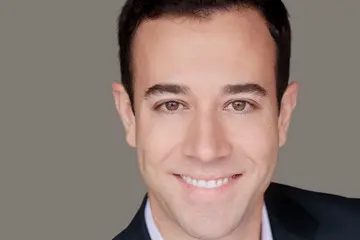Postscript SMS Aims for Best in Class

Postscript is an SMS marketing provider for Shopify brands. The company launched in 2018 and has since raised a whopping $106.2 million across four funding rounds, per Crunchbase. Alex Beller is Postscript’s president and one of three co-founders.
Postscript’s marketing platform is SMS-only and Shopify-only. To Beller, that translates to “best in class” performance.
In our recent conversation, he and I discussed the company’s focus, regulatory compliance, and more. The entire audio of our discussion is embedded below. The transcript is edited for length and clarity.
Eric Bandholz: How was 2023 for Postscript?
Alex Beller: Postscript’s business is a reflection of the Shopify ecosystem. We only work with brands built on Shopify, so we’ve felt a lot of what ecommerce brands have felt this year. We’ve seen growth in terms of brands adopting Postscript. It feels like 2023 is the year we carved out our niche in the market. It’s been challenging, but honestly, as I reflect with my co-founders, every year has been challenging. That part doesn’t change.
We’re an SMS provider for brands built on Shopify. We don’t work with any other platforms. We don’t do email. We’re best in class for SMS on Shopify
Our platform is built for brands to connect SMS to order and conversion data. That gets fed into Postscript from Shopify, and it’s anonymized. Roughly 12,000 brands of varying sizes use Postscript. That’s not nearly all Shopify’s customer base, but it’s an excellent snapshot.
This year, we’ve seen inconsistencies. On the one hand, headwinds certainly seemed present. We’ve seen more brands go out of business than in prior years. We also saw aggregate growth slow down. The last few years we’ve had high annual growth rates. This year’s growth is smaller. Many merchants were closer to flat. Still, ecommerce did not fall off a cliff. It was a bit of a retrenching.
Bandholz: In 2021, Florida passed a sweeping SMS compliance bill. What are the legalities merchants should be aware of?
Beller: There are many compliance rules in the SMS industry. One is governmental regulation that creates legal risk for brands. At the U.S. federal level, it’s through the Telephone Consumer Protection Act or TCPA.
The other is carrier regulation — T-Mobile and Verizon — to impact deliverability. Carriers might shut a phone number off if a brand breaks their rules. Those companies are protective over their airwaves and inflexible when dealing with an appeal from a small to medium-sized business.
Then there’s the legal regulation. Historically, TCPA ensured companies never texted anyone who didn’t explicitly opt in or had opted out. State regulations have popped up over the last few years, adding new risks. Florida is one of the leaders in this, along with Oklahoma.
Much of the risk involves sending the messages and a higher threshold for opt-ins. Our approach is to upgrade our backend compliance so brands don’t have to worry as much.
Unfortunately, the state regulations have triggered a groundswell of lawsuits. We address this in our product and have an in-house legal effort to help brands if they need it.
Bandholz: Talk more about the risks to merchants.
Beller: Florida has longer quiet hours for subscribers in the state — from 8:00 p.m. to 8 a.m. There’s also a limit of three messages within 24 hours for a specific campaign or product. Those state-level regulations in Florida don’t exist at the federal level. They apply to any brand with operations in Florida. The penalties are meaningful — $500 to $1,500 per message per subscriber.
Unfortunately, there are plaintiffs who buy deactivated and old numbers to receive texts they didn’t sign up for or are in the quiet hours. These plaintiffs partner with law firms to certify it as a class action. If successful, they can run down everyone who received that text, greatly increasing the penalty, which, again, is based on every message and recipient.
Brands have multiple prevention options. Postscript won’t deploy messages during the quiet period in Florida or elsewhere. We also advocate that brands adopt terms of service that include a class action waiver, wherein subscribers agree not to participate. That would limit liability to a single subscriber, the plaintiff, at $500 to $1,500.
Bandholz: Postscript is SMS only. Do you plan to diversify?
Beller: It’s the early days for SMS, and we’re working on driving performance across the entire customer journey. We focus on subscriber lifetime value and list growth. There’s much opportunity for my co-founders and me if we can differentiate our product from competitors. We can be dedicated players.
Bandholz: Where can people find you?
Beller: Our site is Postscript.io. I’m on LinkedIn and @ringmybeller on X.









